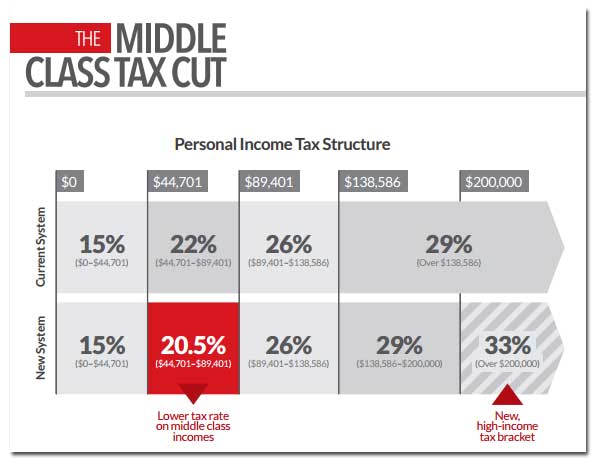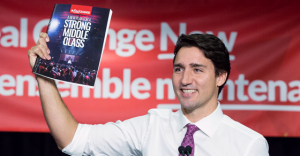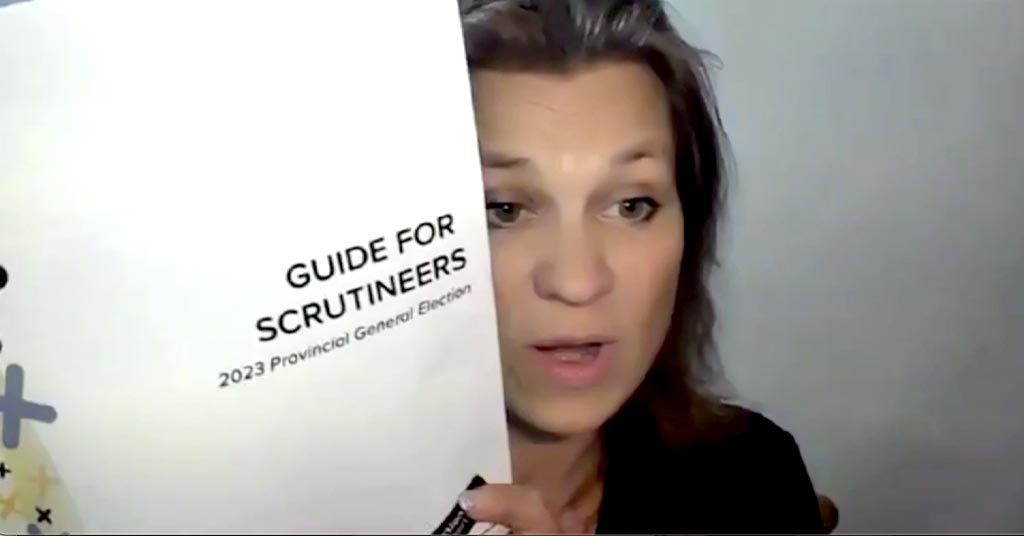
3 reasons why the “middle class tax cut” does not truly benefit the “middle class”
Digging deeper into the Liberals' proposed tax reforms, is it accurate to say this truly benefits the "middle class"?
As announced in Friday’s Speech from the Throne, Prime Minister Justin Trudeau plans to make the so-called “middle class tax cut” his new Liberal government’s first order of business.
During the election campaign, Trudeau said he’s “committed to lowering taxes for the middle class by asking the wealthiest to pay more tax.”
But digging deeper into the proposed tax reforms, is it accurate to say this truly benefits the “middle class”?
Here are three things to consider:
1. Two-thirds of Canadians who earn less than $45,000 see no benefit
Canada has four income tax brackets.
The Liberals’ proposed tax reforms will make no changes to the tax rate for the lowest and top two tax brackets.
It does, however, lower the tax rate for the second lowest bracket (from 22% to 20.5%) and creates a new “high-income tax bracket” for those earning over $200,000 (taxed at a new rate of 33%).

Sounds good, right? Well, one little problem – two-thirds of Canadian taxfilers are stuck in the lowest tax bracket because they earn less than $45,000 in taxable income.
In other words, only one-in-three Canadians earn enough to even qualify for the “middle class tax cut” in the first place.
2. Canada’s wealthiest 10% will get half of all the benefits from the “middle class tax cut”
Despite being described as a tax cut that benefits the “middle class,” Canada’s wealthiest 10% will receive half of all the benefits.
That works out to $1.5 billion in tax savings for everyone with taxable incomes higher than $89,200.
Why? Canada’s income tax system is structured so you pay different tax rates on different levels of earnings (for example, 15% on the first $44,701, 20.5% on the next $44,700, 26% on the next $49,185 and so on). So, even if a taxpayer’s total taxable income is $199,000, they get a tax cut on what they earn between $44,701 and $89,401 too.
As the Broadbent Institute’s Andrew Jackson points out:
“Fully one half of the $3 billion in savings flowing from the ‘middle class’ tax cut will in fact go to the top 10% of individual tax filers who had taxable incomes of more than $89,200 in 2012. Beneficiaries include the top 1% with incomes of more than $222,000, though this elite group will face a new top tax rate of 33%, up from 29% today.
To summarize, the major gains from the ‘middle class’ tax cut will go to individuals with incomes between $89,200 and $200,000, roughly the top 10%, minus the top 1% who will pay higher taxes to pay for the tax cut for those below them on the income ladder.”
Which begs another question: are the wealthiest 10% truly “middle class”?
3. The new tax changes will not raise any money
After aggressively reducing the size of government, many Canadians are looking to rebuild and reinvest in social programs that can improve the quality (and affordability) of life for the middle class.
Yet the Liberals estimate what new revenue is generated by raising taxes on wealthy Canadians ($3 billion) will be offset by the $3 billion cost of the new “middle class” tax cut (with $1.5 billion alone going to the wealthiest 10% of Canadians).
As the Liberal platform itself states, “the two tax changes will be revenue neutral to the federal government”:

The biggest thing Harper accomplished was “just shrinking the size of government and doing so by reducing the tax base,” University of Saskatchewan political science professor David McGrane said after the election.
After Harper reduced Canada’s revenue streams by $43 billion each year, new revenues could be put to work by investing in programs aimed at the ballooning costs of child care, postsecondary tuitions or prescription drugs, all of which could go a long way to improving the quality and affordability of life for Canada’s middle class.
Photo: J. Trudeau.
Our journalism is powered by readers like you.
We’re an award-winning non-profit news organization that covers topics like social and economic inequality, big business and labour, and right-wing extremism.
Help us build so we can bring to light stories that don’t get the attention they deserve from Canada’s big corporate media outlets.
Donate




